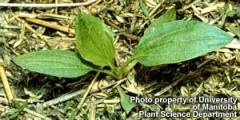 |
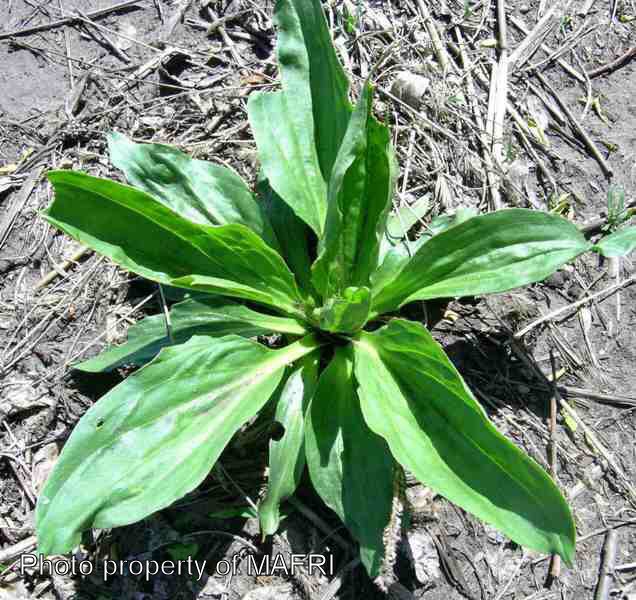 click to enlarge |
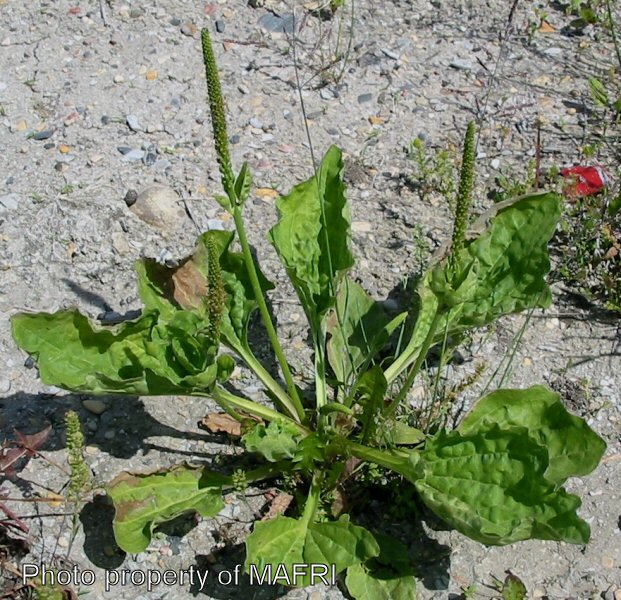 |
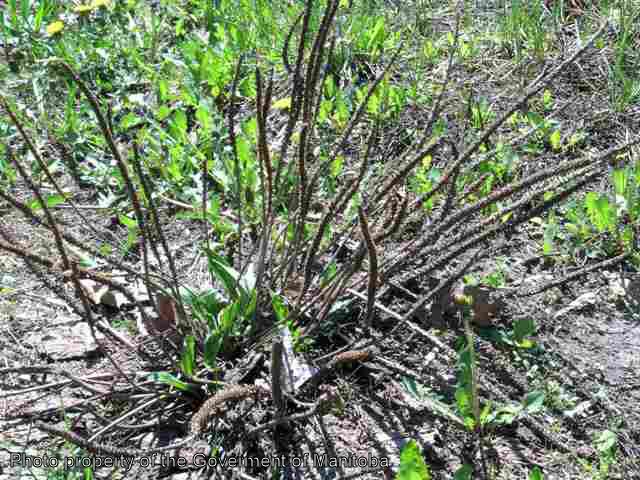 |
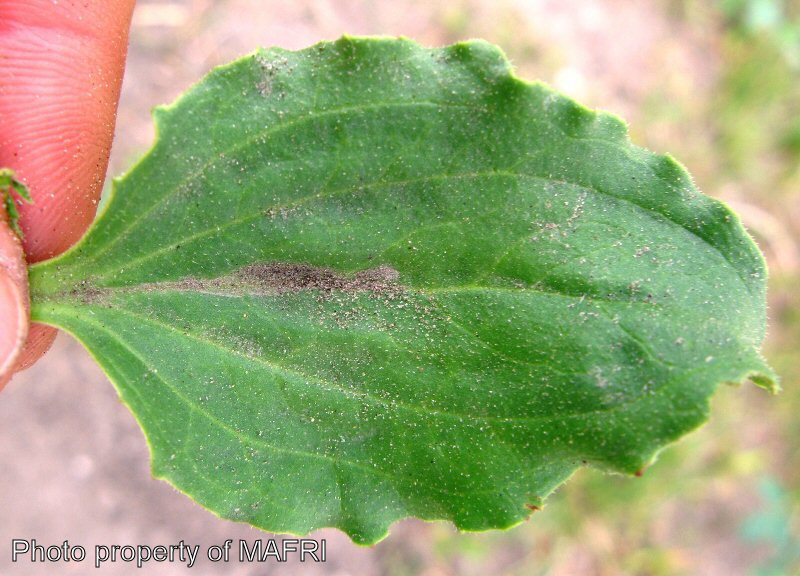 |
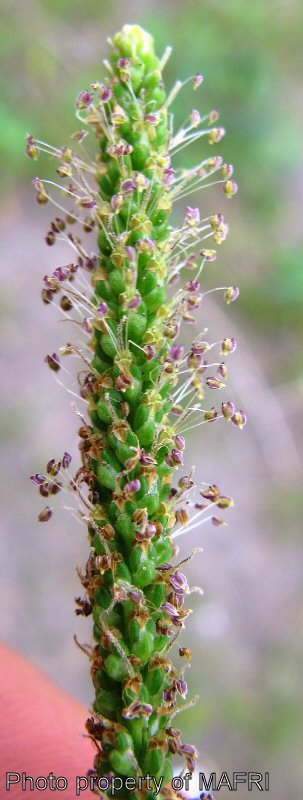 |
 |
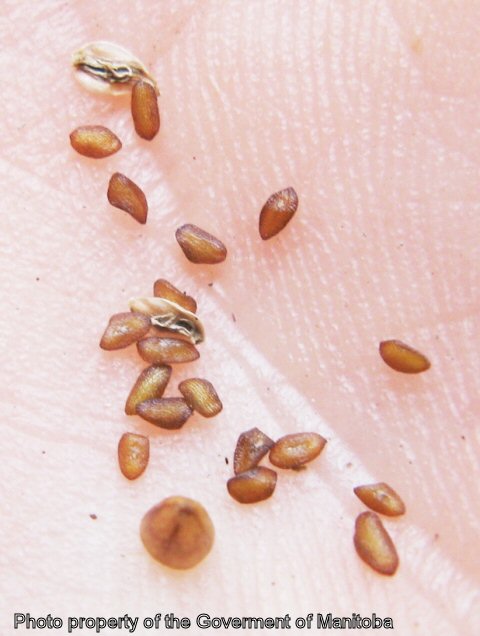 |
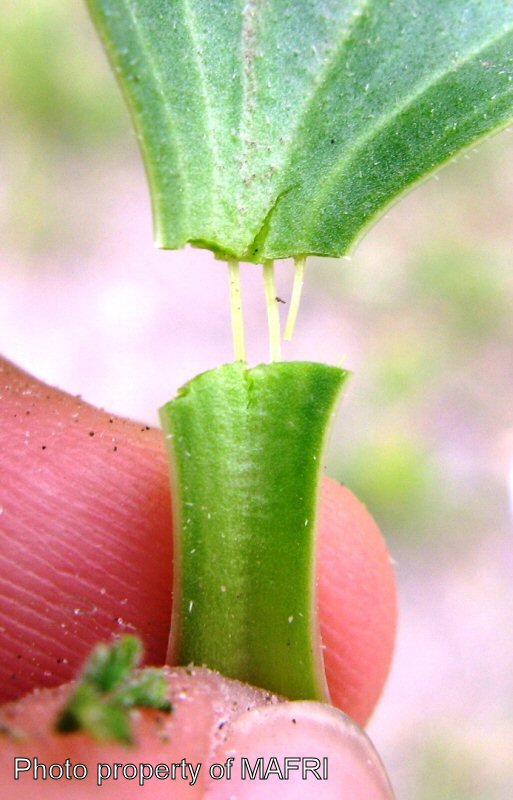 |
Biology
An annual, biennial or perennial, reproducing by seeds. This weed contains an anti-histamine which can be used as an antidote for nettle stings. Stems are absent. The leaves form a basal rosette as a result of no internodal elongation. The leaves are large, 20 cm long x 12 cm wide or larger, oval, dark green, petiolate, with entire or slightly toothed margins. Three or more prominent parallel veins radiate from the leafstalks to the tips of the leaves. The flowers are small, 2.5 mm long, greenish-white, and occur on compact spikes on long leafless stems. The seeds are small, 1 x 0.6 mm, oval, one side is concave, dark brown to black, and occur in a capsule.
Scouting Techniques
Take a minimum of 20 weed counts across the field. Scout roadsides, pastures, lawns, and gardens for patches of this weed.
Effects On Crop Quality
Primarily a problem in lawns but can reduce early growth of both corn and oats. No dollar amount on crop losses is available. May indirectly effect the growth of desirable plant species because it hosts the aster yellow disease which is transmitted by the six-spotted leaf hopper.
Control Tips
- easily controlled by Group 4 herbicides
- Group 9 & 10 in herbicide tolerant crops
